- Ribbon Microphone

It’s a dynamic microphone that utilizes the principle of electromagnetic induction.
Placing a strip of thin metallic film between the two poles of a magnet, signals are generated when the film vibrates in response to sound, due to electromagnetic induction.
The directional characteristic of a ribbon microphone is Bi-directional.
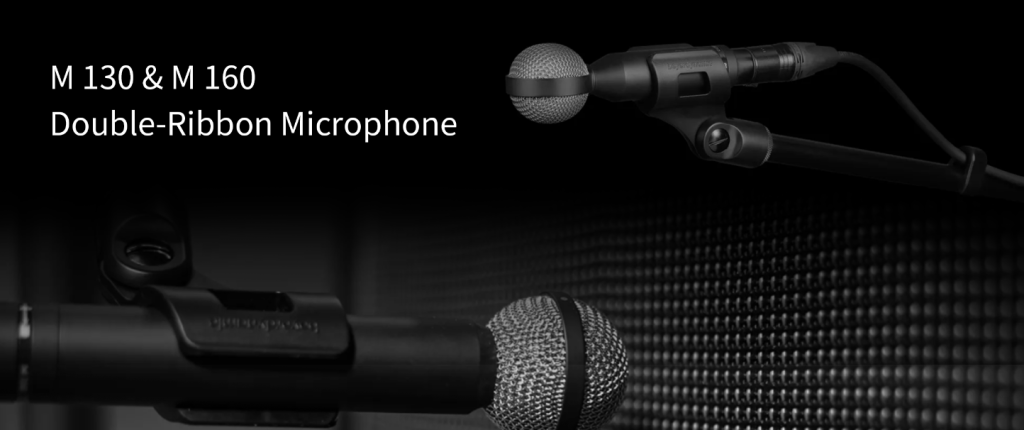

M160 is a Ribbon Microphone, and directivity is Hypercardioid.
It features a Hypercardioid directional characteristic and provides 25dB noise attenuation at 110-degree angles.
It is suitable for recording drums (cymbals, overhead), guitars, string instruments, and vocals, with a focus on indoor recording.
The unique feature of the M 160 is its ability to smoothly capture a significant amount of midrange while minimizing room noise. The microphone’s response exhibits a slight dip within the most crowded spectrum between 300 to 800Hz, but it rises with the presence of mid-high/low-high frequencies between 2 to 6 kHz.
Response curve of wave frequency
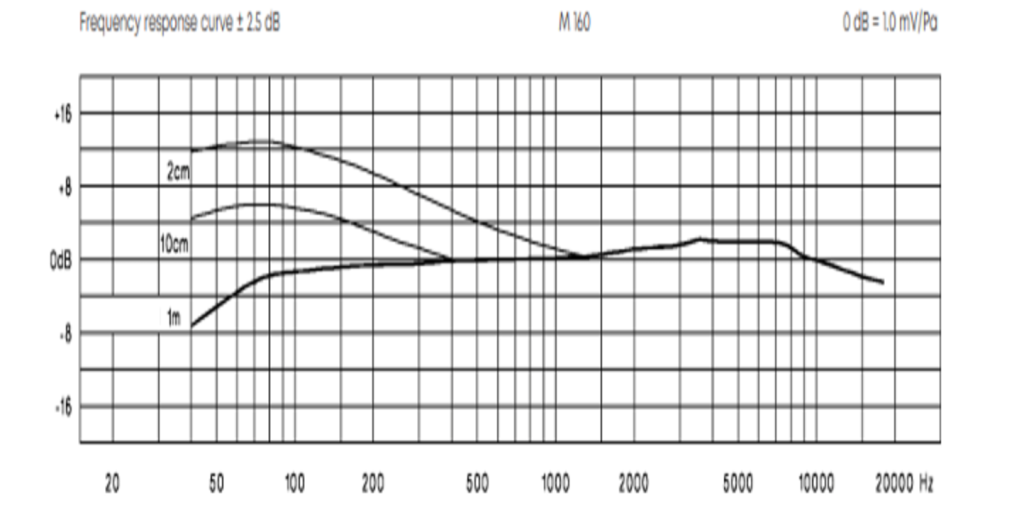
Directional coordinate diagram

M130 provides two stacked aluminum ribbons, ensuring a pure, uncolored sound, suitable for drums, percussion, acoustic guitar, string instruments, and piano, with a focus on indoor recording.
Two M130 microphones can be used to create a Blumlein pair for recording pristine room ambience. When used with Mid-Side recording techniques for stereo recordings, the M130 delivers exceptional results. Its robust design makes it suitable for handling remote recording or broadcast meetings just like it would in a studio. When used individually, the M130 can capture background audience noise and hall ambiance without unnecessary resonances. In a recording studio, it can effectively complement choirs, percussion instruments, and fixed snare drums.
M160 directivity is Bidirectional.
Response curve of wave frequency
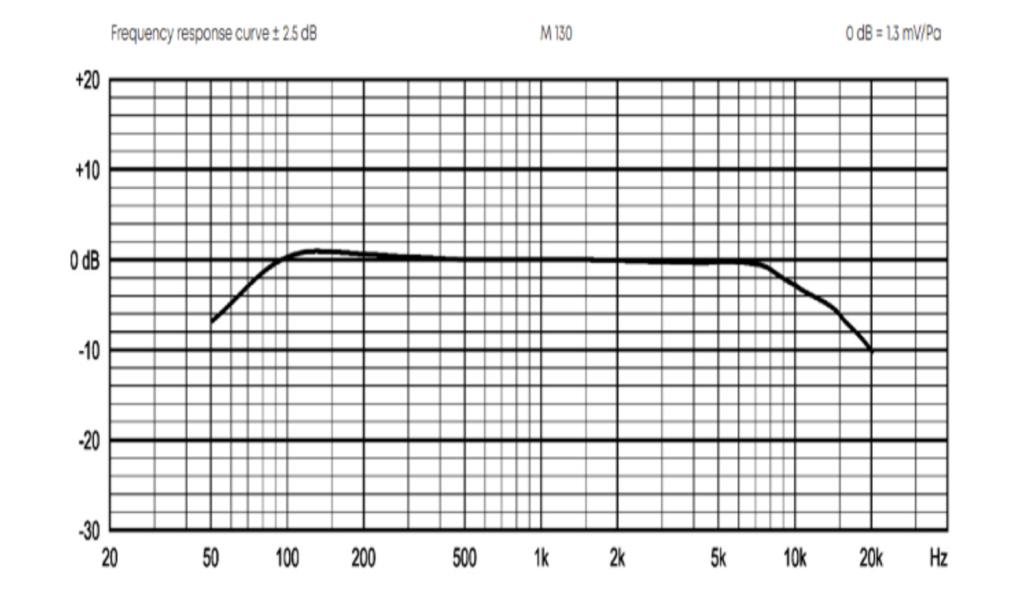
Directional coordinate diagram
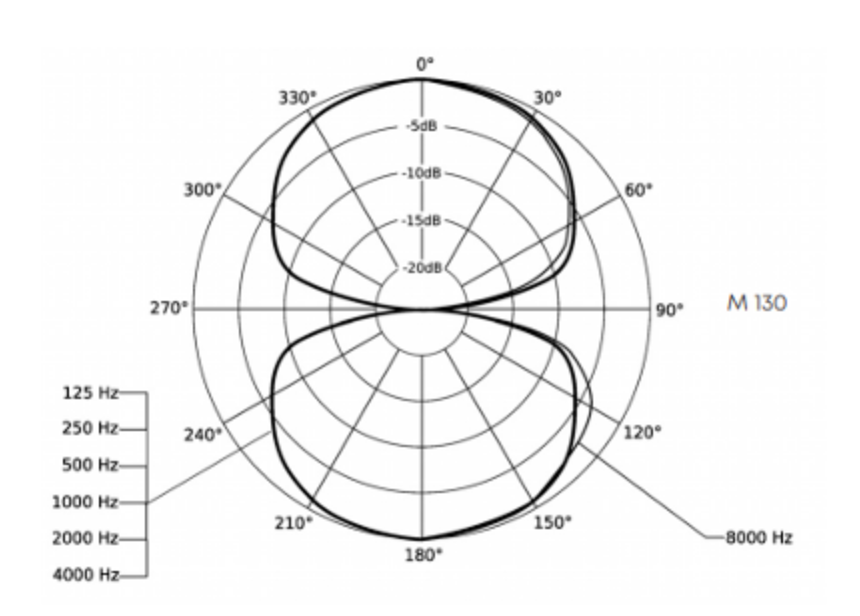
2. Dynamic Microphone
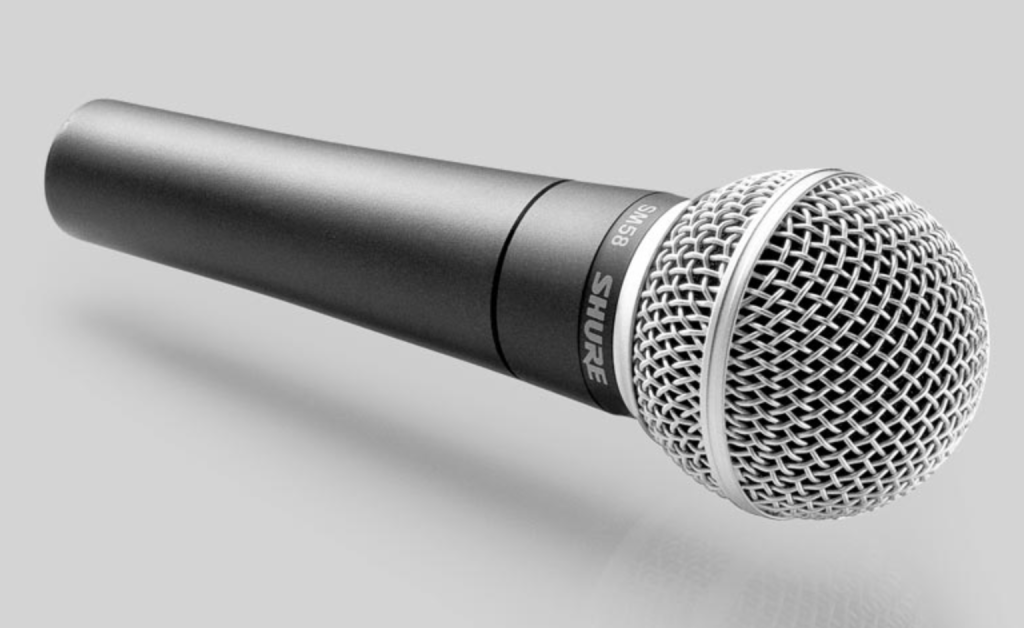
Dynamic microphones generate electrical current by directly cutting the magnetic field with their coil, and as a result, they do not require external power.
Dynamic microphones, due to their coil and magnet components, are typically less lightweight and have lower sensitivity compared to condenser microphones. They may also exhibit poorer high and low-frequency responses. However, their advantages include a smoother sound quality, making them suitable for recording vocals.
SM58 Response curve of wave frequency
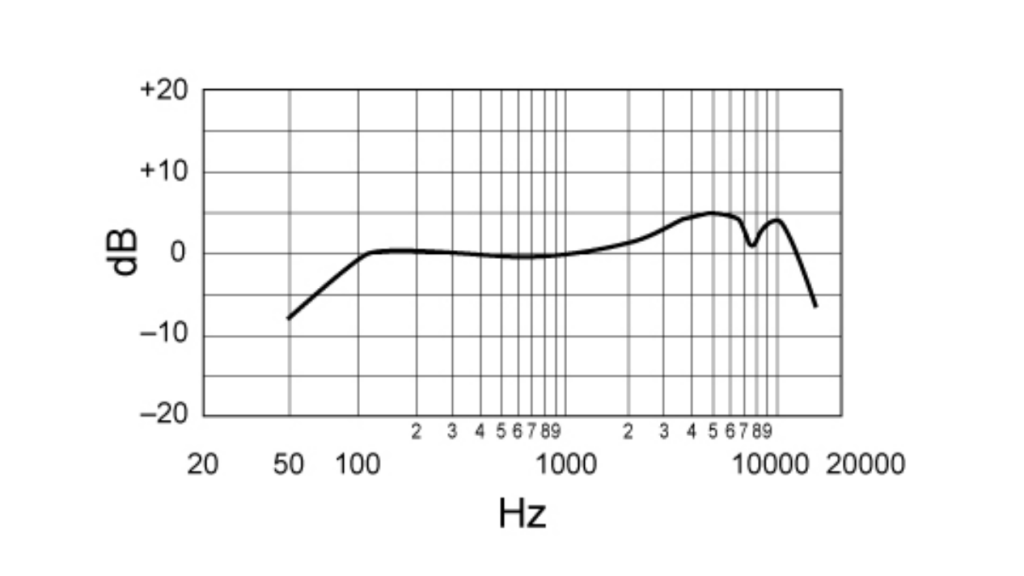
SM58 Directional coordinate diagram
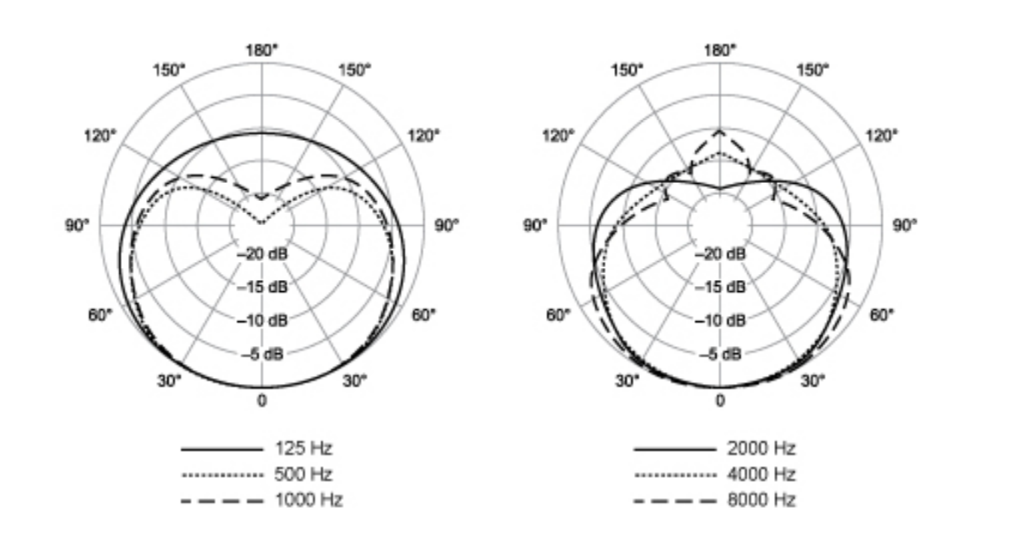
3. Condenser Microphone
(1)Small-diaphragm condenser microphone

In the literature, some audio engineers refer to microphones with a size of approximately 12 millimeters as “small-diaphragm microphones,” while those with a size of 24 millimeters or larger are classified as “large-diaphragm microphones.
Condenser microphones typically have an internal amplifier and require external 48V phantom power or a battery to operate.
Small-diaphragm condenser microphones are suitable for extremely precise sound capture. However, sometimes, their precision may make the sound appear less dynamic and powerful. The choice of a small-diaphragm condenser microphone is meaningful because diaphragms with a diameter of around 12 millimeters are highly sensitive to the vibrations of sound waves.
(2) Large-diaphragm condenser microphone
Large-diaphragm condenser microphones have the advantage of producing a rich and warm sound, making them suitable and comfortable for recording various audio sources.
However, a drawback is that as the frequency of sound increases, the microphone’s directionality becomes more pronounced. This is not an issue when recording directly into the microphone, but when using two microphones for stereo recording, off-axis sounds may not be captured optimally.
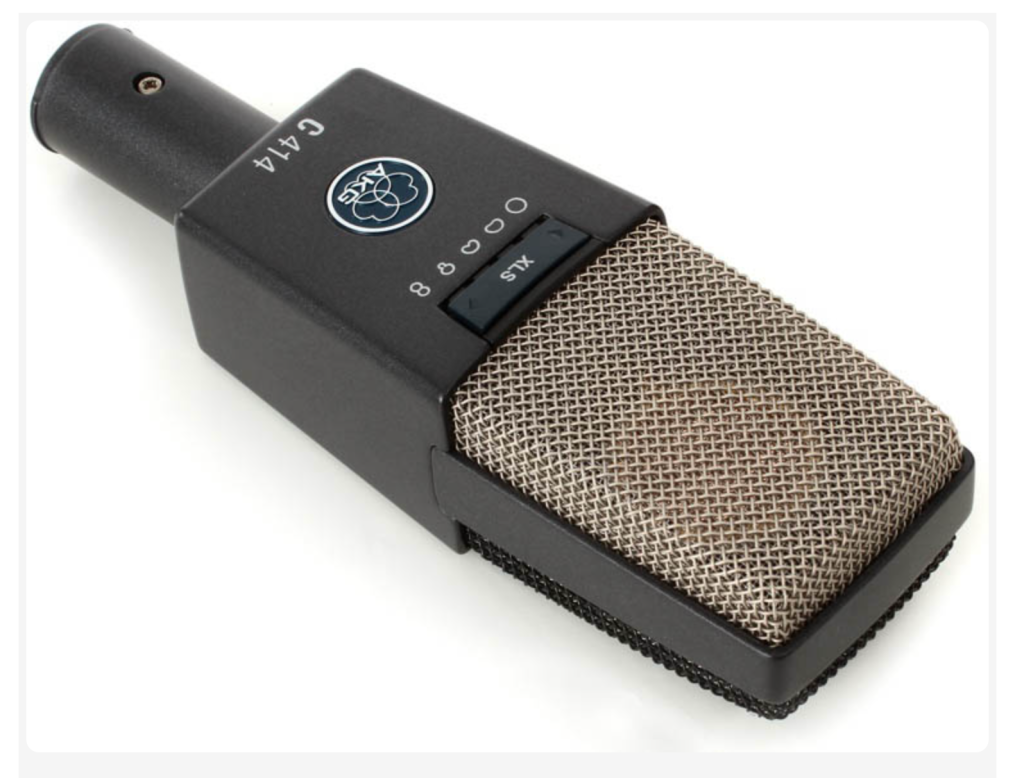
The C414 XLII is a large-diaphragm condenser microphone that covers the entire audible spectrum, with a frequency response range between 20 Hz and 20 kHz.
This microphone exhibits a very flat response across the entire frequency spectrum, with occasional minor boosts and cuts. It is completely flat from 20 Hz to 1,000 Hz. There is only a slight dip between 1 kHz and 2 kHz, followed by a slight boost in the region between 5 kHz and 15 kHz. Finally, there is a minor dip after the 15 kHz or 16 kHz mark, reaching its lowest point at 20 kHz.
This microphone features three switches, one of which allows you to choose from 9 different pickup patterns: Cardioid, Figure of eight, Hypercardioid, Omnidirectional, and Wide Cardioid, and four additional intermediate patterns with mixed shapes. Each of these polar patterns also affects the overall frequency response and curve shape.
The other switch controls the low-end cutoff filter, allowing you to cut unwanted low frequencies, such as low-frequency noise when recording vocals. This switch offers 40 Hz, 80 Hz, and 160 Hz cutoff modes. The 40 Hz and 80 Hz settings provide a steeper curve, reducing 12 dB per octave, while the 160 Hz curve is smoother, reducing 6 dB per octave.
The third switch is used for attenuation and offers three additional modes: 6 dB, 12 dB, and 18 dB. These are useful for close-up recording and louder settings where attenuation is useful.
Its primary function is recording vocals. For recording musical instruments, it is most suitable for string instruments, classical guitar, acoustic guitar, and wind instruments, among other acoustic instruments.



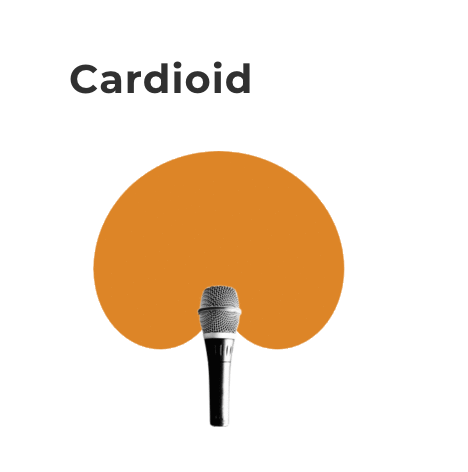
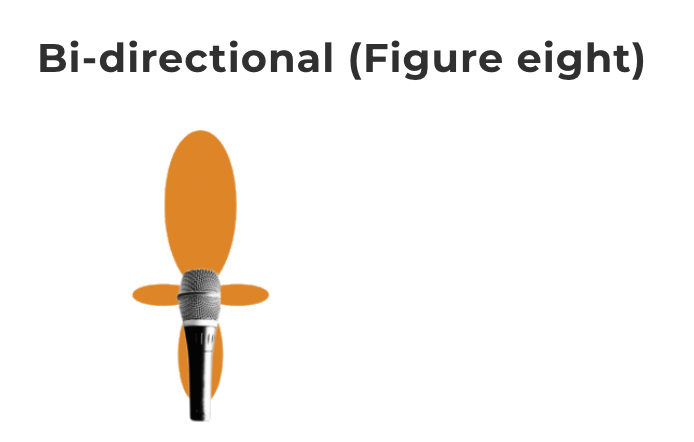
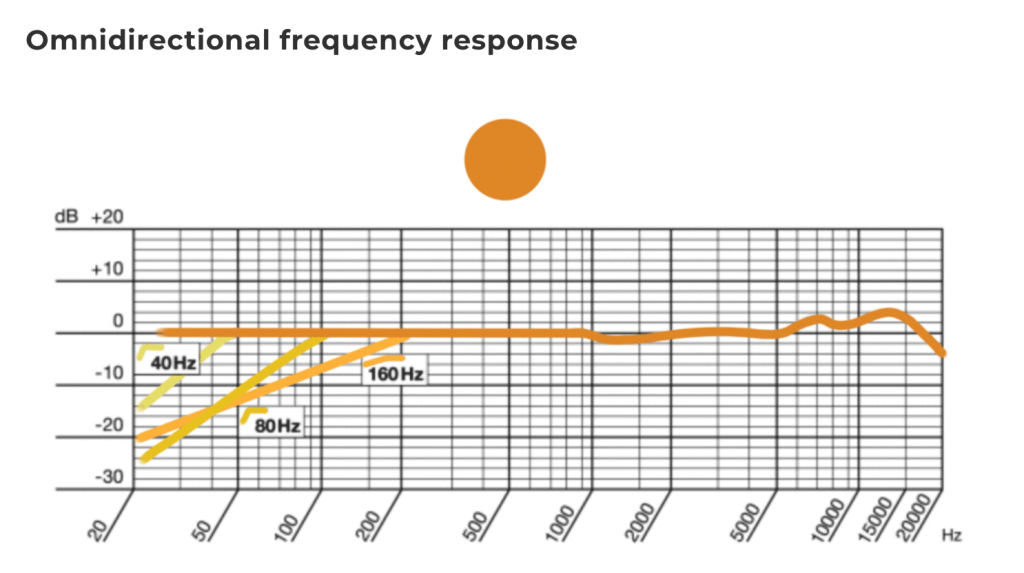
4. Electret Condenser Microphone
A electret microphone is a special type of condenser microphone. An electret material is one that can hold a permanent charge when charged. Utilizing this principle, the electret material on the diaphragm or backplate provides the constant voltage required for the microphone’s capacitor element, eliminating the need for external power for the microphone itself. However, the internal amplifier of the microphone still requires power from a battery or phantom power.
Electret microphones are relatively small in size and cost-effective. Electret microphones with an integrated FET (Field-Effect Transistor) preamplifier can provide high performance. Many of the most accurate microphones in the world today are electret microphones.
